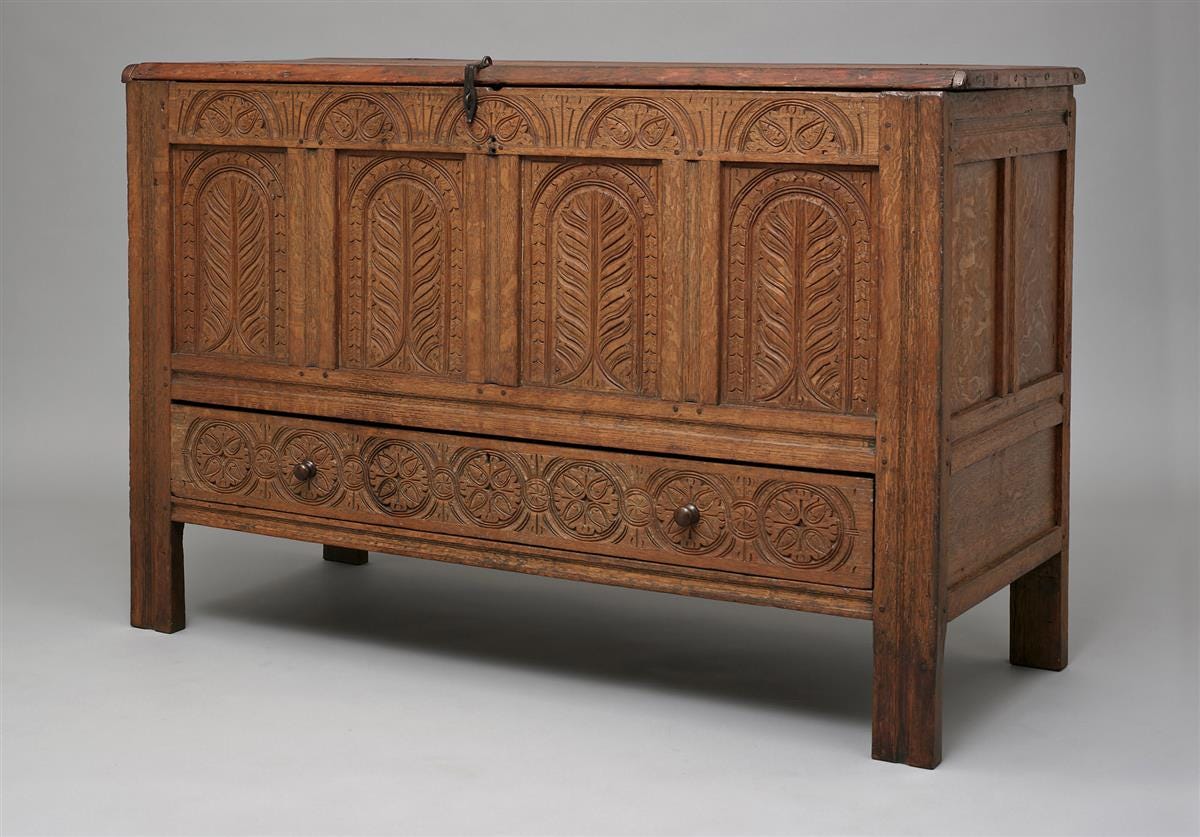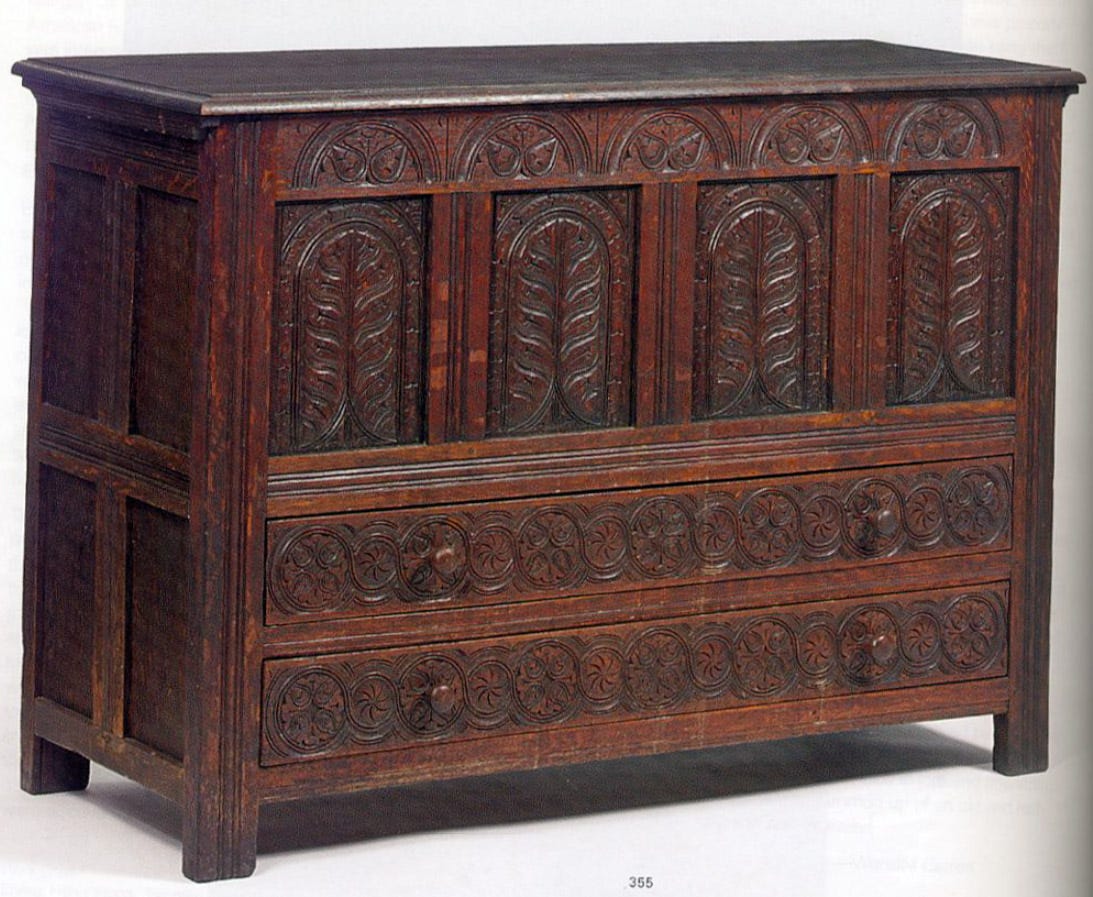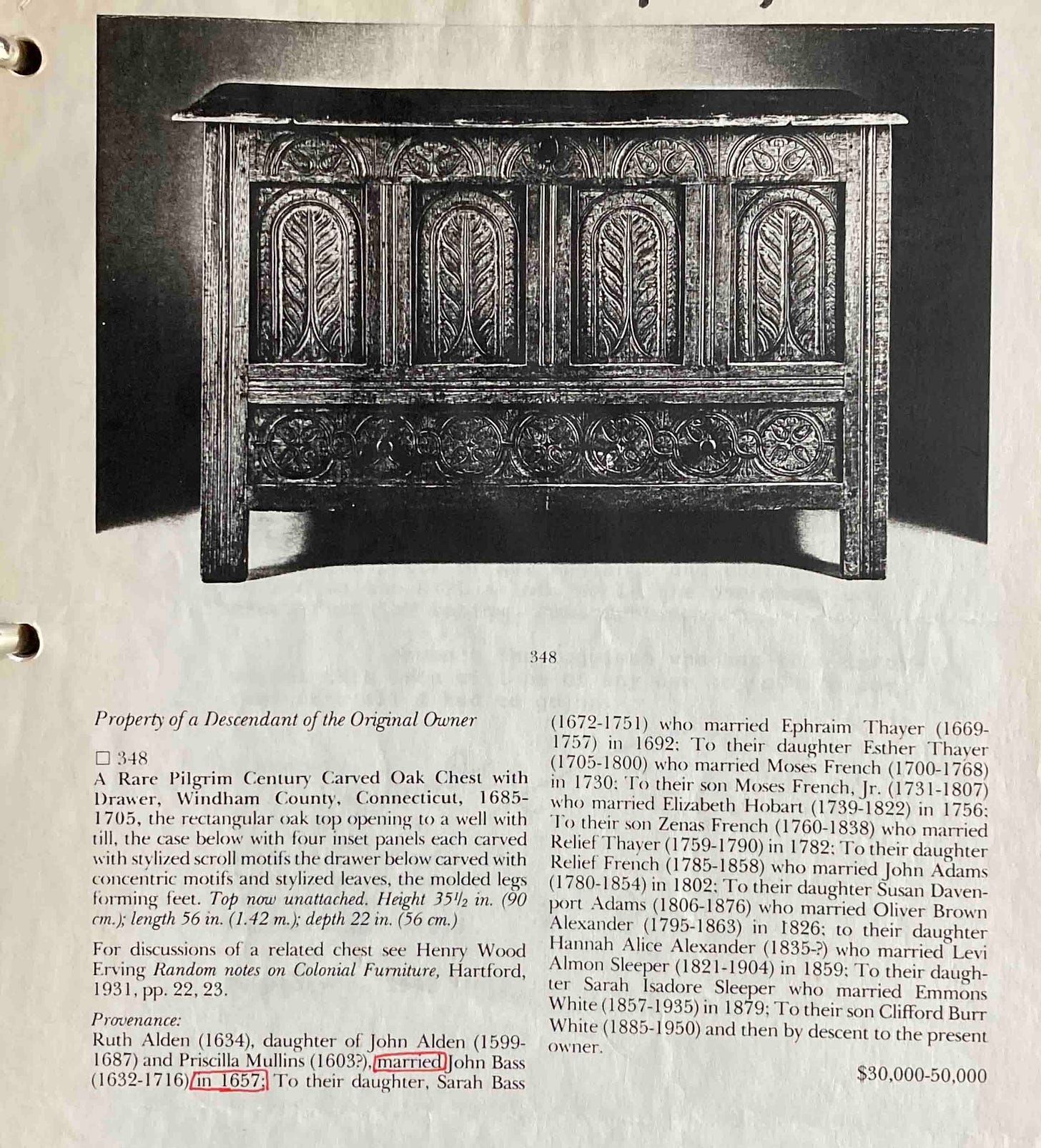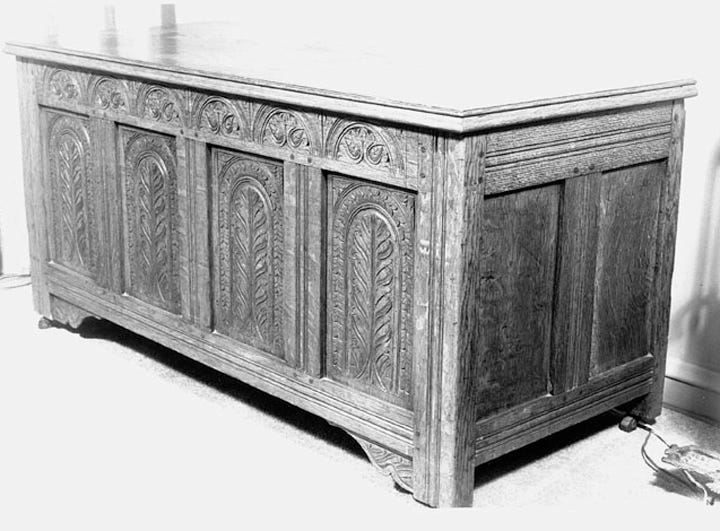[In the shop, I’m getting ready for next week’s box-making & carving class at Pete Galbert’s new shop. And carving some panels - the ones I posted last time sold and I started a waiting list for the next batch. If you’d like to be on that list, send me an email at PeterFollansbee7@gmail.com - the way it works, once I have the panels carved, I send photos to the first name on the list and then work my way down the list. No commitment, easier that way. But today’s post continues some of my recent furniture history posts.]
While I’m on the subject of William Savell and his sons John and William, I thought some of you might like to learn a bit about how Jennie Alexander and I came to assign the carved works we studied to them. When you read our 1996 article about this shop tradition (link at the end) - you’re seeing the results of our research. But how did we get there? It’s a long, convoluted story; I think I’ll break it into two parts - first - how did we decide the joinery tradition was from Braintree, Massachusetts? Then in part two I’ll show how we arrived at the Savells as the most likely makers of these works.
To back up a little bit, with one slightly possible exception, there’s no signed works from 17th-century New England - (there’s one piece with an inscription that for decades has been considered by most furniture history scholars to be a forgery). So with no signatures we rely on various factors to try to assign surviving works to known joiners/carpenters/artisans. It’s a dicey game, fraught with traps. The first thing to do is gather a group of related objects - usually related by decorative features - carvings, turnings, paint schemes, etc.
In the case of the Savell/Braintree pieces - it was easy, the joined chests almost all follow the same format - a 4-panel chest with a single drawer below. Carved top rail, panels and drawer front. One or two exceptions that still have some of these same features. Two without drawers, two or more with two drawers.
This first one will serve as an example - it belonged to Wallace Nutting and is now at the Wadsworth Atheneum in Hartford, Connecticut. He published it in his Furniture of the Pilgrim Century (revised edition 1924; fig. 13). There, he noted that Henry Wood Erving owned a similar chest. Erving’s was published a few years later in a small pamphlet (Random Notes on Colonial Furniture, 1931). Erving stated that his chest came from Windham County Connecticut. And so for the next 60 years or so, they were deemed Connecticut chests.
Erving’s (now at Chipstone in Milwaukee) has two drawers, but in its details it is a bit of an outlier in the group. Clearly follows the same designs and format, but is different in many ways. When we undertook our study, we found maybe 12 chests. Since then, I’ve seen about 4 or 5 more. After studying the objects, the next thing is collecting any known “recovery” histories; family histories, published discussions of the objects. Then seeing if there’s any common threads in those stories. Few of the ones we studied at first had any histories.
In 1988 one was auctioned by Sotheby’s in New York. That one had a family history that traced it to John Bass (1632-1716) and his wife Ruth (Alden) Bass, married in Braintree in 1657. That was the first inkling that these works might be from Braintree.
We eventually found a few others with Braintree connections; this one, from a private collection, had connections to the French family of Braintree.
When I saw it in 1991, it was in Delaware. The owner told me his mother married Charles Hibbard French (1877-1919) in 1915. Charles was born in Braintree. The story that came down through the owner’s family is that the chest was a wedding present from Charles’s uncle.
Keep reading with a 7-day free trial
Subscribe to Follansbee's Substack to keep reading this post and get 7 days of free access to the full post archives.








